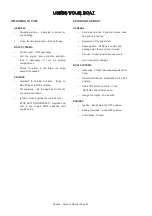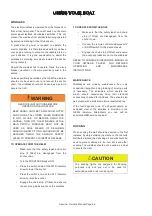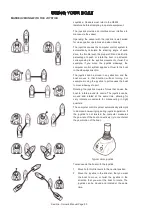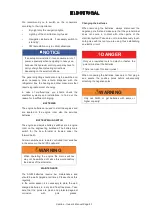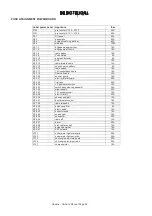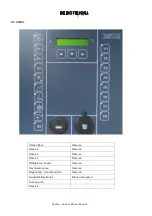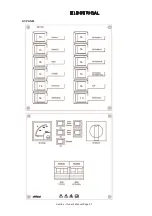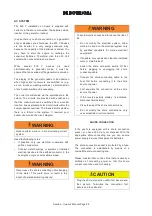
86,1*<285%2$7
6HDOLQH2ZQHUV0DQXDO3DJH
RETRIEVING THE ANCHOR
ವ
Start the main engines to avoid running
down the batteries - windlasses especially
under load will drain batteries extremely
quickly.
ವ
Check that the windlass master switch is set
to the 'ON' position and that the anchor is
ready to be raised.
ವ
Give the engines a light rev ahead to take
the weight off the anchor chain. As the
weight on the chain decreases, haul the
chain in on the windlass.
ವ
If the anchor chain appears to be causing
excessive strain on the windlass, with the
anchor pulling immediately under the bow,
you should stop the windlass and secure the
chain before giving the engines a further
light rev astern to break out the anchor. To
avoid any damage being caused to the
windlass motor an overload circuit breaker
is incorporated within the windlass electrical
circuit. Should this trip it will need to be
reset.
ವ
To avoid the risk of fouling another craft's
anchor or chain when moving away from the
anchorage, never move ahead until the
anchor is safely stowed away and secure.
ವ
Run the boat slowly up to the anchor, taking
in the rode as you go.
ವ
The anchor will usually break out when the
rode becomes vertical.
ವ
Be careful that trailing lines do not foul in the
propeller.
ವ
Use water to hose down the chain in the
locker after haul-in.
CLEARING A FOULED ANCHOR
A fouled anchor can test your patience and ingenuity.
One of the best methods of breaking free is to set a
trip-line before you lower anchor.
1
TRIPLINE
2
RODE
3
FLOAT
ವ
Attach a line to the crown or head of the
anchor and the other end to a float.
ವ
The line should be just long enough to
reach the surface of the water allowing for
tides.
ವ
A polypropylene line is a good choice
because it is light, strong and floats.
ವ
If the anchor snags, pull vertically on the trip
line to lift the anchor by the crown.
A FINAL WORD
An anchored boat is affected by wind and sea
conditions. Because there is no headway, there is no
control. Be alert! If leaving the boat, be sure the
anchor will hold under all circumstances. We suggest
you read this section on anchoring again and fully
understand rode and scope and their affect on
anchor performance.
Summary of Contents for S450
Page 1: ... ...
Page 2: ... ...
Page 6: ... 6HDOLQH 2ZQHU V 0DQXDO 3DJH ...
Page 55: ... 75 6HDOLQH 2ZQHU V 0DQXDO 3DJH AC PANEL 10 10 16 10 16 16 16 16 16 10 16 10 ...
Page 81: ... 7 1 6HDOLQH 2ZQHU V 0DQXDO 3DJH ...
Page 82: ... 6HDOLQH 2ZQHU V 0DQXDO 3DJH DATA SHEETS DIAGRAMS PRINCIPAL DIMENSIONS ...
Page 84: ... 6HDOLQH 2ZQHU V 0DQXDO 3DJH DECK PLAN ...
Page 86: ... 6HDOLQH 2ZQHU V 0DQXDO 3DJH SYSTEM CONTROL POINTS ...
Page 88: ... 6HDOLQH 2ZQHU V 0DQXDO 3DJH EQUIPMENT LOCATION ACCOMMODATION SPACE ...
Page 90: ... 6HDOLQH 2ZQHU V 0DQXDO 3DJH GAS SYSTEM LAYOUT ...
Page 92: ... 6HDOLQH 2ZQHU V 0DQXDO 3DJH FIRE PROTECTION SYSTEM 3 4 1 5 6 8 1 2 7 8 8 1 ...
Page 94: ... 6HDOLQH 2ZQHU V 0DQXDO 3DJH BLACK WATER SYSTEM ...








